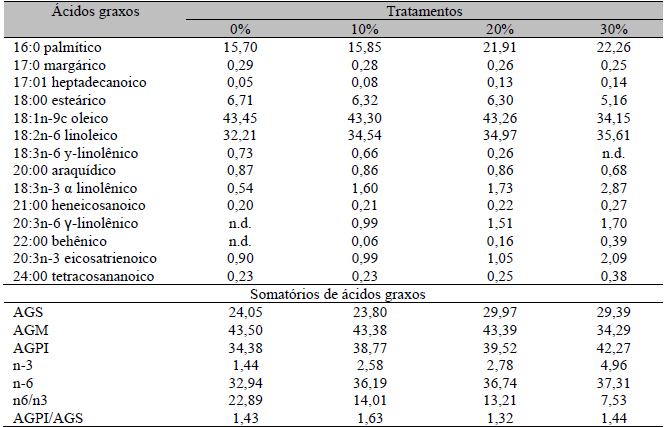ABSTRACT
This study sought to evaluate the effects of the inclusion of cassava peel on the centesimal composition and fatty acids of the Longissimus muscle of lambs. We used 32 uncastrated crossbred Santa Inês lambs, with average body weight of 21 ± 1.5 kg. Treatments were in a completely randomized design, with the inclusion of cassava peel (0, 10, 20, 30%) in the diet dry matter. Hay from the cassava shoot has been used as forage and the forage:concentrate ratio was 48:52. The experiment lasted 70 days and then the lambs underwent a fast for 16 hours, were slaughtered, and their carcasses remained at a temperature of 4°C for 24 hours. In cold carcass the Longissimus muscle were taken and frozen (4°C) until the analysis. The results for moisture, ashes and protein were not influenced by cassava peel, and a decreasing linear effect was observed for the lipids levels. In composition of unsaturated fatty acids, there was a linear effect for C15:0 and a quadratic effect for C14:0, C18:0 and C22:0. Regarding the monounsaturated fatty acids, a linear effect has been observed for C16:1, C18:1-9c and C22:1-9c, and a quadratic effect for C15:1, C17:1 and C20:1. With the polyunsaturated fatty acids, a linear effect was observed for CLA, C20:3n-6, C20:4n-6, C20:5n-3 and C22:6n-3, and a quadratic effect was seen for C20:2 and C18:3n-6. Thus, it is concluded that the centesimal and fatty acid composition varies depending on the inclusion of cassava peel, however, it does not compromise the quality of the meat.
Keywords:
alternative feed; carcass; meat quality






